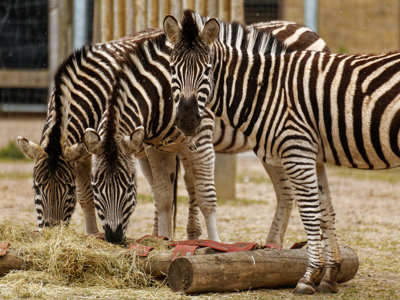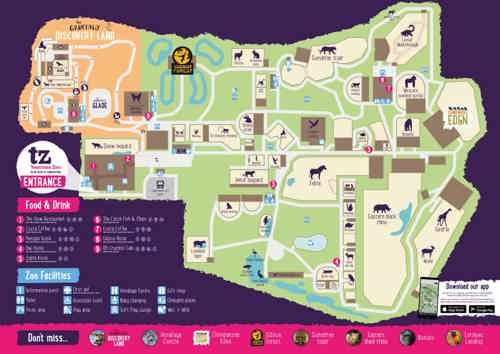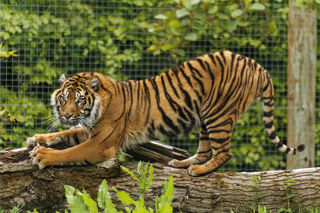
Zebra
Zebra are one of the most iconic of all of Africa’s grazing animals. They are currently separated into six sub species based on variations in features such as coat patterning and body size. Twycross Zoo’s zebra are Chapman’s zebra.
Zebra are famous for their black and white stripes. There are a number of different reasons suggested to explain zebra stripes, including dazzling predators, thermal regulation and stimulating group cohesion.
Zebra breed throughout the year with peak births during the wet season to ensure there is plenty of food. Gestation is around 360 – 390 days, after which a single young is produced that can stand almost immediately. The foal is weaned at 7 to 11 months, but can start eating grasses from one week old.
Zebra are widespread and do not face any threats significant enough to cause a range-wide population decline and are classed as Least Concern by the IUCN. However, local populations and various subspecies are affected by habitat loss, hunting and competition with livestock for grazing and water.
Size and weight
Height: 110 – 145cm
Weight: 175 – 385KG
Life expectancy
Life expectancy: Approximately 25 Years
Conservation status

Habitat and location
Habitat: Grasslands & Savannahs
Location: East & Southern Africa
A large proportion of Champan’s zebra can be found in Zimbabwe
Zebra’s eat an all-grass diet, they travel long distances across the plains for food, often being the first species to use new areas of grassland.
You can find our zebra’s on Conservation Way, opposite the Lorikeets.

Key Facts:
Conservation Status: Not listed
Distribution: Central and south America
Habitat: Rainforest edge and clearings, dry tropical forests, scrub and agricultural land.
Diet: Rodents, birds, bats, monkey, wild pig and small deer.

SUPPORT OUR ANIMALS
If you're looking for an alternative way to donate to Twycross Zoo, you can help support our animals and our zoo keepers by purchasing something from our Amazon Wishlist!
Updated regularly by our zoo keepers, the items on the list help to provide enrichment for our animals and keep their habitats well maintained.
Every donation helps us as a conservation charity.

